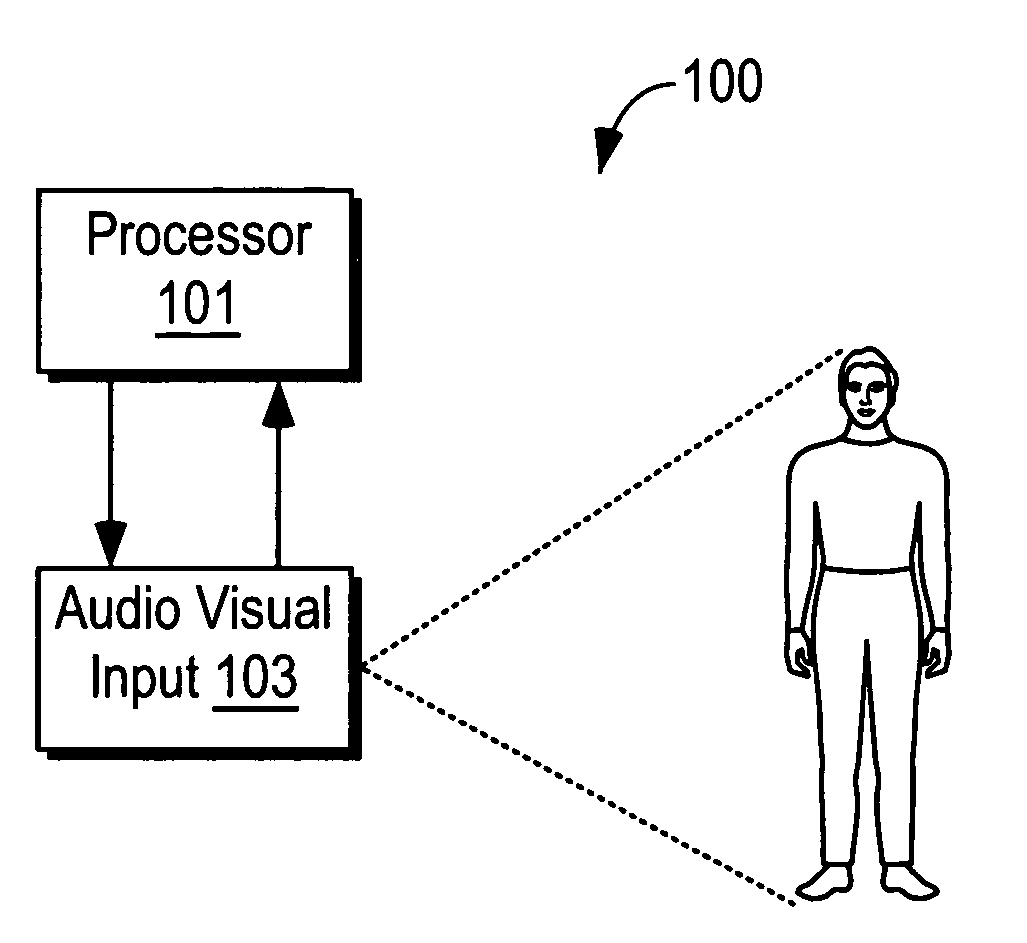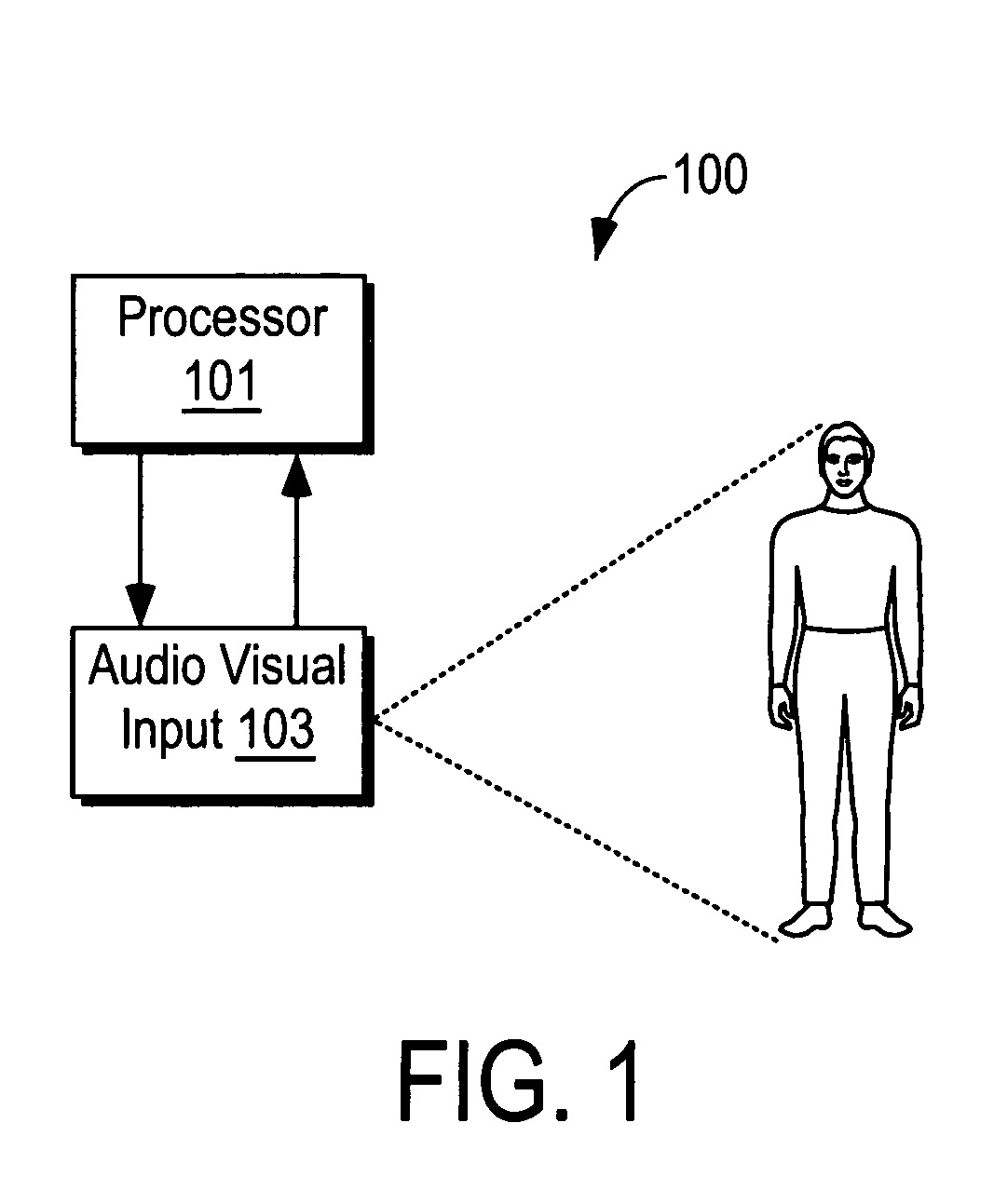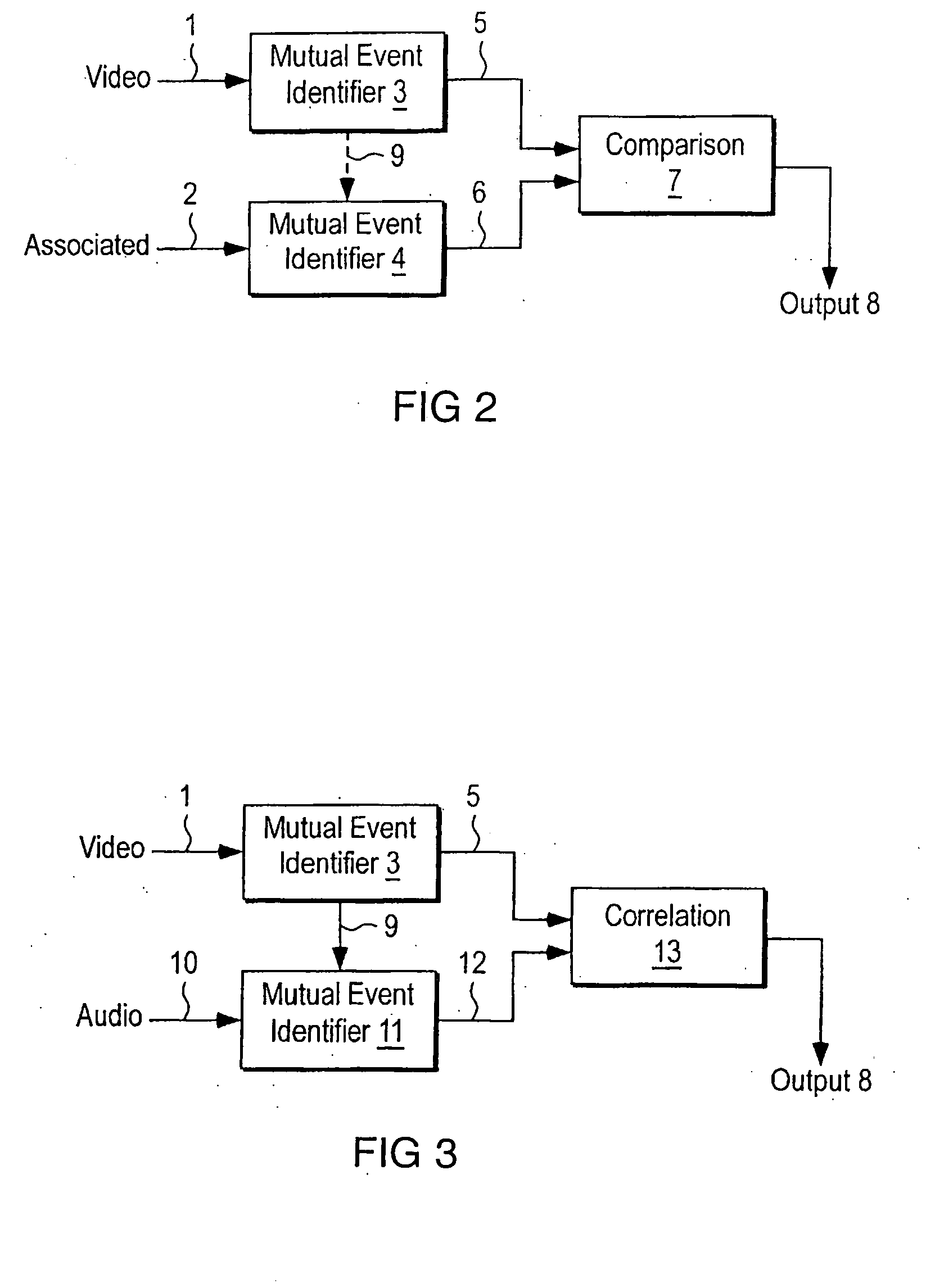Method, system, and program product for measuring audio video synchronization independent of speaker characteristics
a technology of audio video and speaker characteristics, applied in the field of synchronization of multimedia entertainment, educational and other programming, can solve the problems of inability to determine which syllables are being spoken, inability to determine the timing of speech, and limited applicability of patent descriptions
- Summary
- Abstract
- Description
- Claims
- Application Information
AI Technical Summary
Benefits of technology
Problems solved by technology
Method used
Image
Examples
Embodiment Construction
[0038]The preferred embodiment of the invention has an image input, an image mutual event identifier which provides image muevs, and an associated information input, an associated information mutual event identifier which provides associated information muevs. The image muevs and associated information muevs are suitably coupled to a comparison operation which compares the two types of muevs to determine their relative timing. In particular embodiments of the invention, muevs may be labeled in regard to the method of conveying images or associated information, or may be labeled in regard to the nature of the images or associated information. For example video muev, brightness muev, red muev, chroma muev and luma muev are some types of image muevs and audio muev, data muev, weight muev, speed muev and temperature muev are some types of associated muevs which may be commonly utilized.
[0039]FIG. 1 shows the preferred embodiment of the invention wherein video conveys the images and an a...
PUM
 Login to View More
Login to View More Abstract
Description
Claims
Application Information
 Login to View More
Login to View More - R&D
- Intellectual Property
- Life Sciences
- Materials
- Tech Scout
- Unparalleled Data Quality
- Higher Quality Content
- 60% Fewer Hallucinations
Browse by: Latest US Patents, China's latest patents, Technical Efficacy Thesaurus, Application Domain, Technology Topic, Popular Technical Reports.
© 2025 PatSnap. All rights reserved.Legal|Privacy policy|Modern Slavery Act Transparency Statement|Sitemap|About US| Contact US: help@patsnap.com



